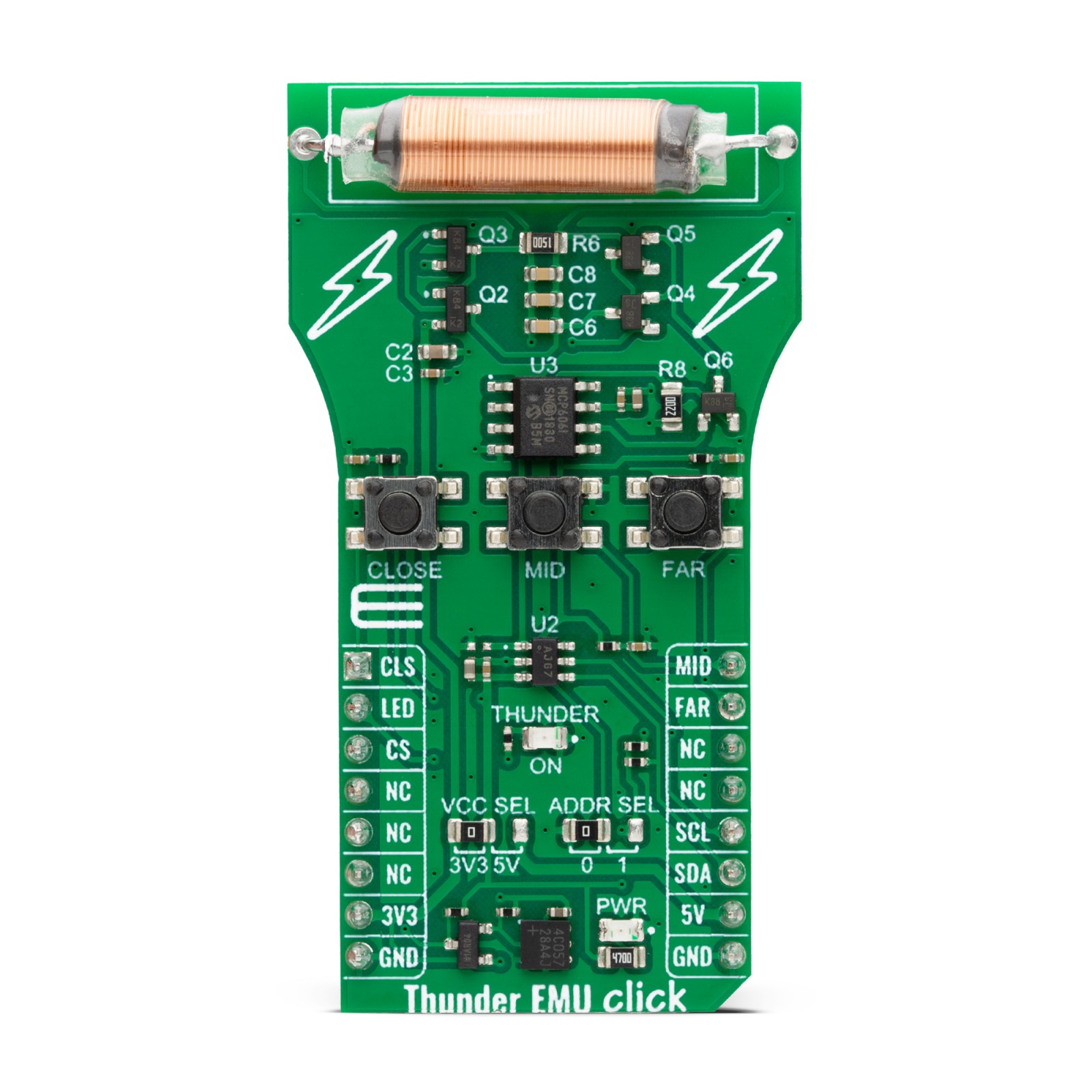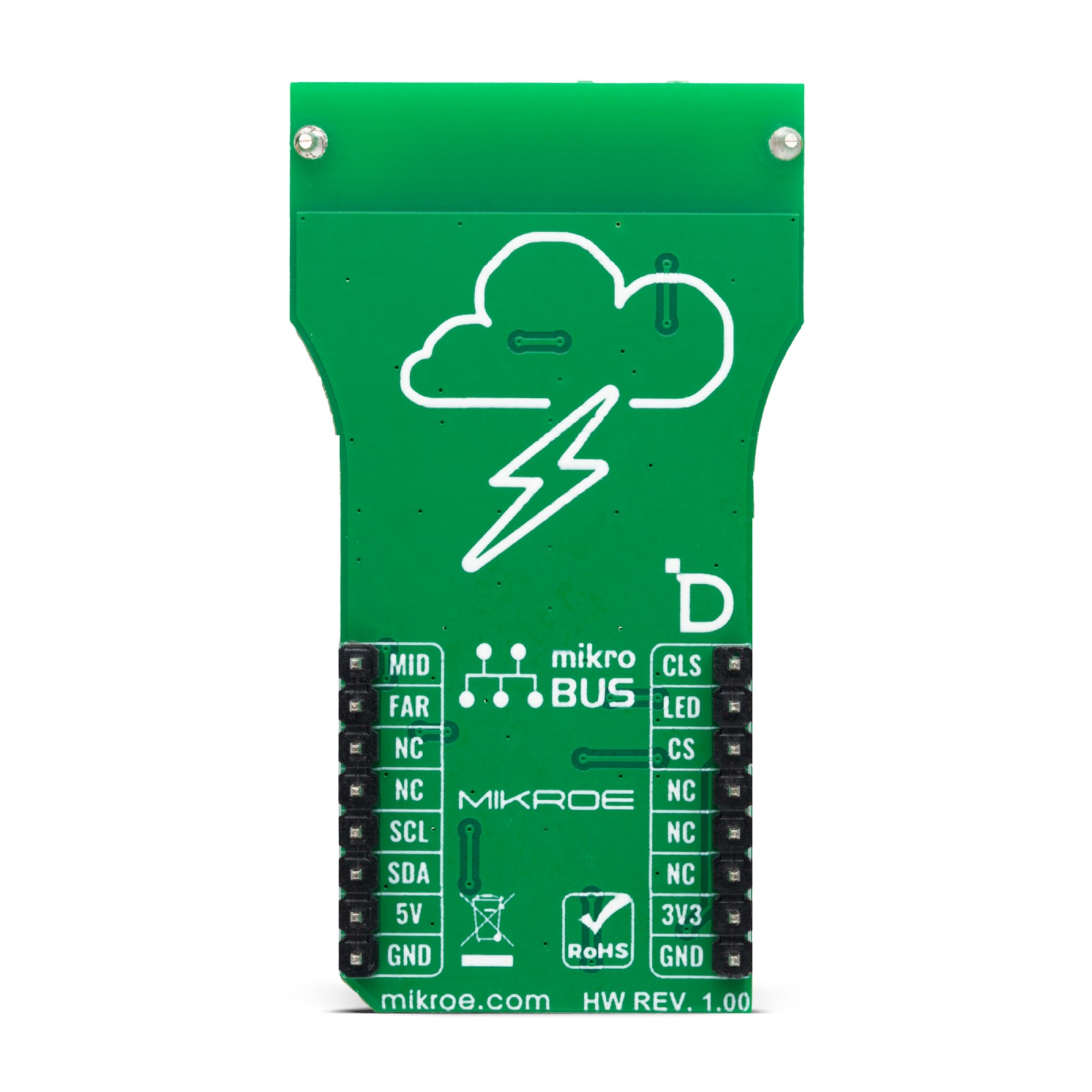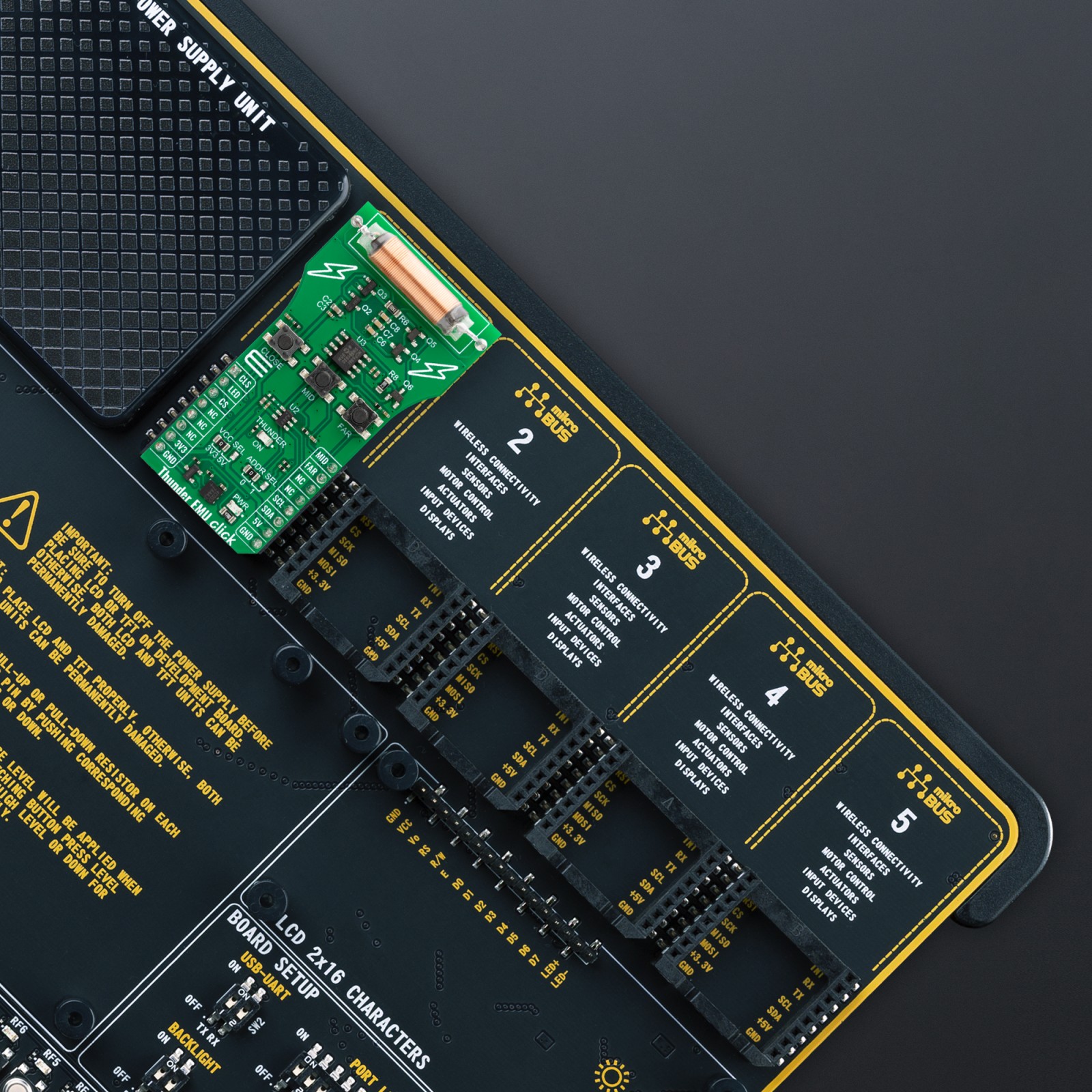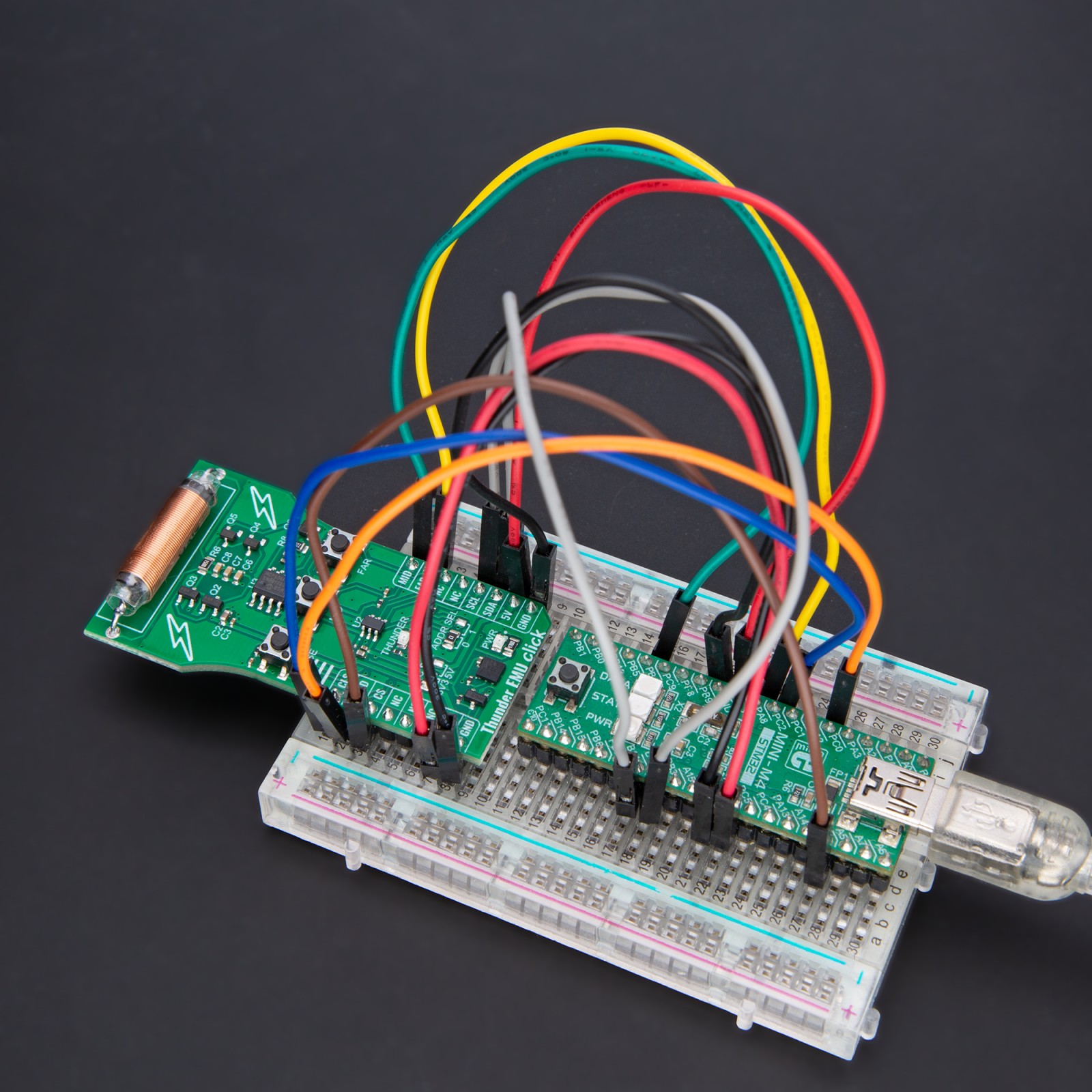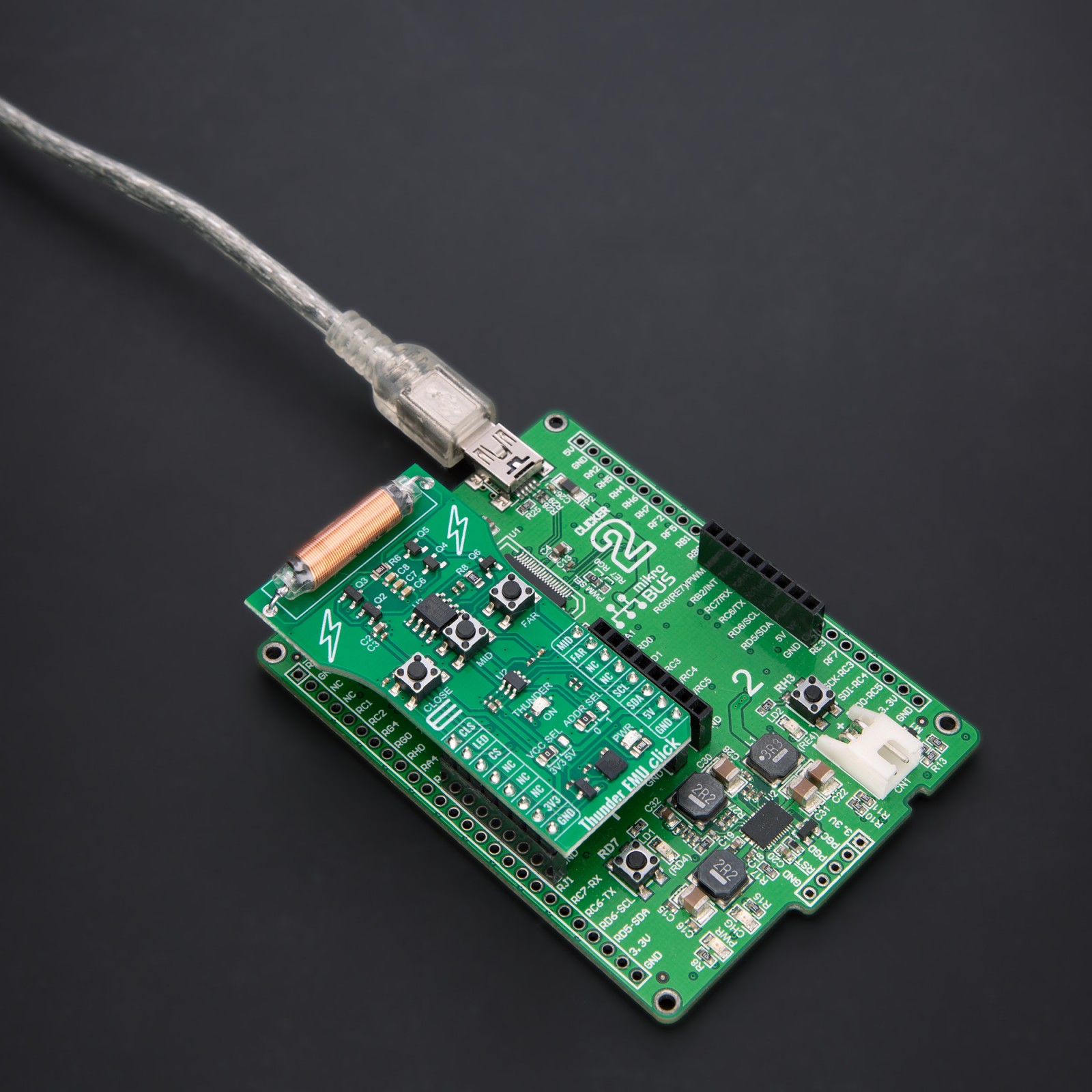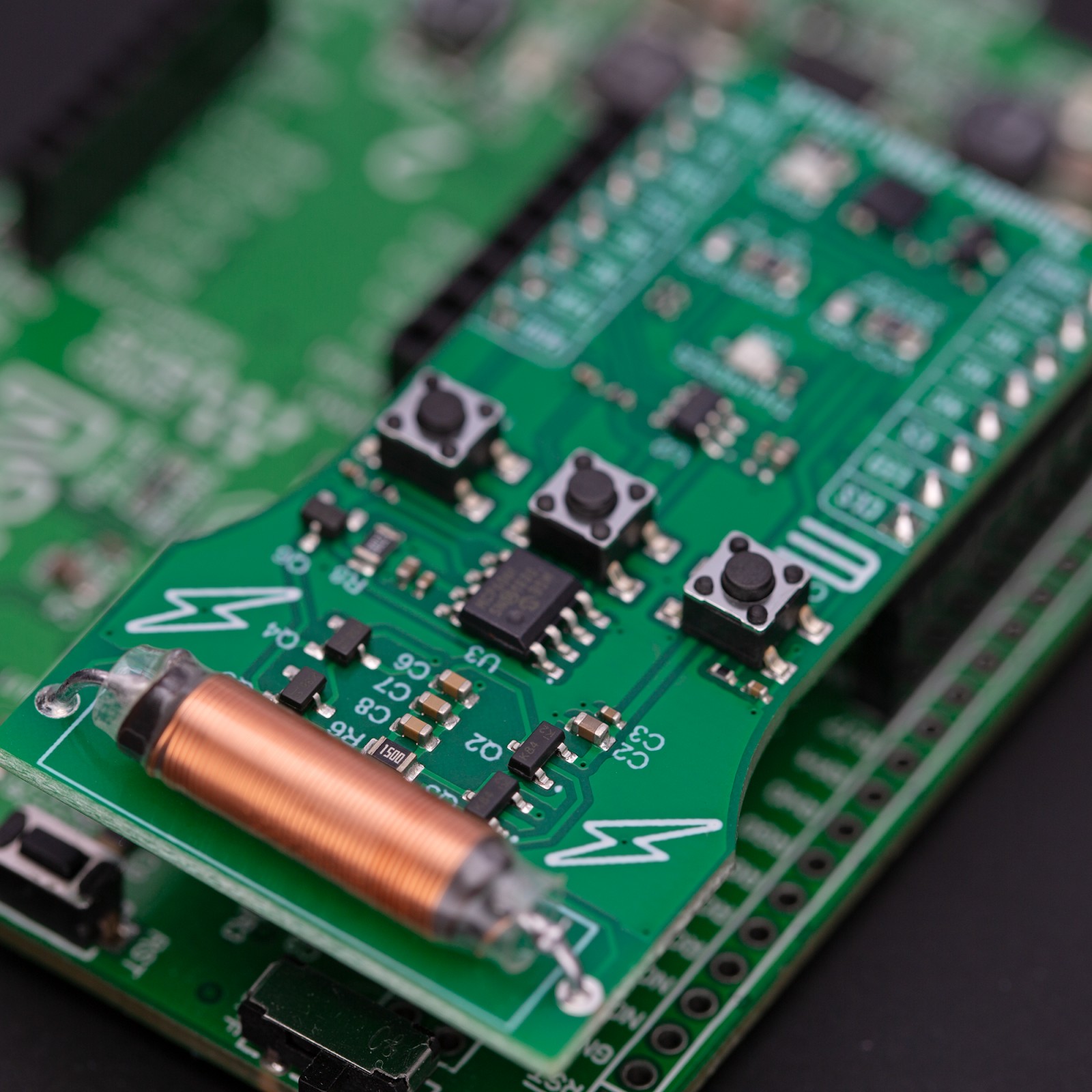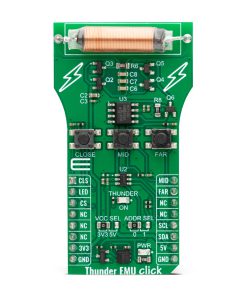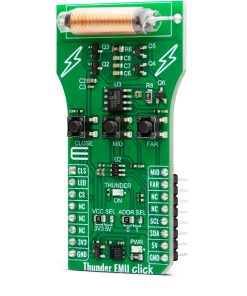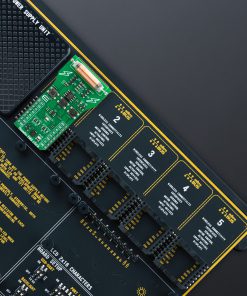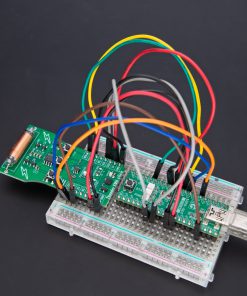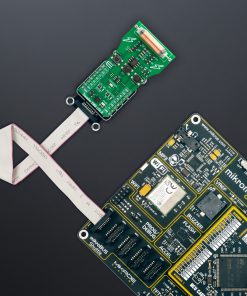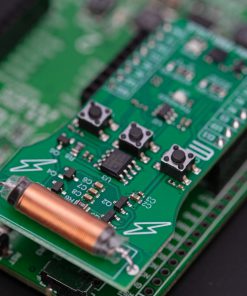Thunder EMU Click
R430.00 ex. VAT
Thunder EMU Click is a compact add-on board that can be used to emulate lightning. This board features circuits that generate an RF signal that mimics lightning strikes. It is a thunder emulator board that allows you to mimic lightning signals that can represent different distances, thus enabling you to debug your lightning detector application for all kinds of scenarios. The RF signal has an effective range of about 5 – 15cm from the emulator antenna of this Click board™ to the sensor antenna. This Click board™ makes the perfect solution for debugging the lightning detectors.
Thunder EMU Click is fully compatible with the mikroBUS™ socket and can be used on any host system supporting the mikroBUS™ standard. It comes with the mikroSDK open-source libraries, offering unparalleled flexibility for evaluation and customization. What sets this Click board™ apart is the groundbreaking ClickID feature, enabling your host system to seamlessly and automatically detect and identify this add-on board.
Stock: Lead-time applicable.
| 5+ | R408.50 |
| 10+ | R387.00 |
| 15+ | R365.50 |
| 20+ | R351.74 |

